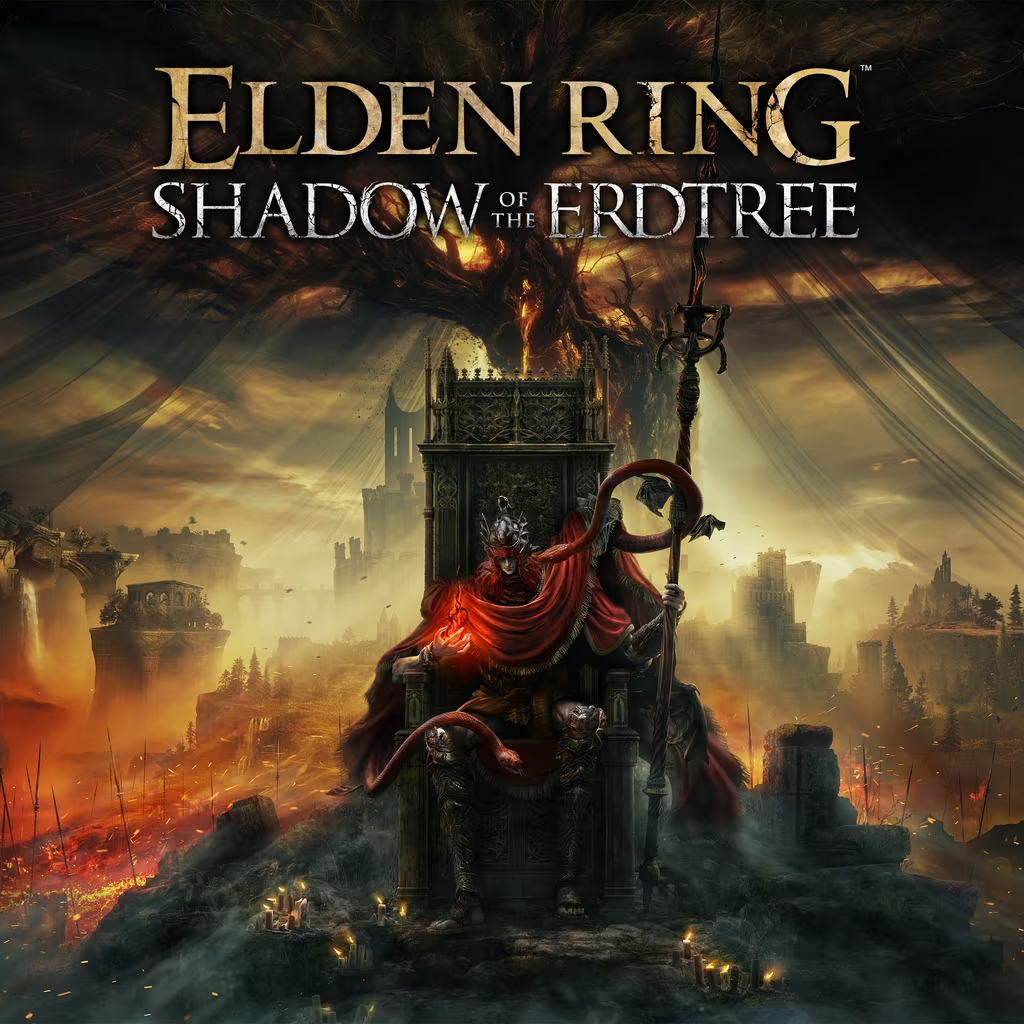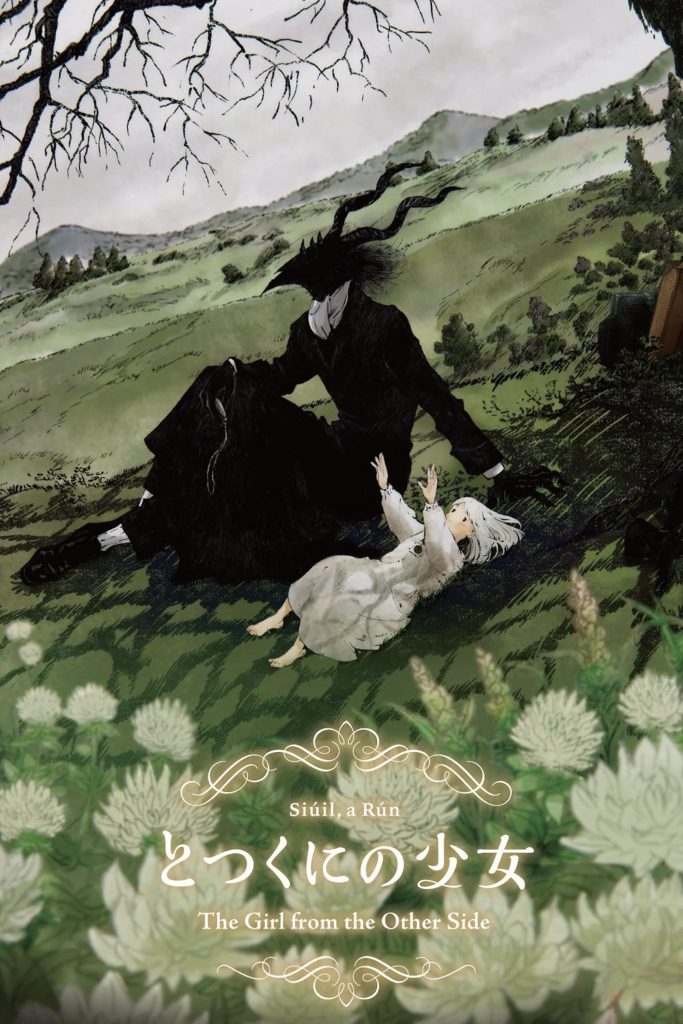Elden Ring: Shadow of the Erdtree
By Kai Ming Wang

The Elden Ring, Oh Elden Ring… Mighty Hidetaka Miyazaki has done it again, underselling this long-awaited expansion that, in typical fashion, overdelivers on all fronts. Building upon nearly every aspect of the main game, Elden Ring: Shadow of the Erdtree transports players to the Realm of Shadow, a new region of the map where they will find new weapons, along with formidable foes and mysterious NPCs. Lore seekers will also rejoice in a slightly more straightforward narrative than the usual read-between-the-line storytelling, which provides closure to the main game’s plot and addresses some previously unanswered questions.
One might wonder how an expansion could possibly improve on the already critically acclaimed Game of the Year-winning base game. Yet, this truly feels like a step up. While it may not be a groundbreaking shift in the soulslike formula that FromSoftware has perfected over the years, it is undoubtedly a subtle refinement of all the game’s mechanics that players know and love (or love to hate). The expansion maintains the sense of scale that made Elden Ring so great while addressing the previous criticism regarding the lack of focus in its open-world approach. Despite the introduction of a new parallel progression system, Shadow of the Erdtree will still give even the best players out there a run for their money, as the new boss encounters are more relentless and unforgiving than ever before.
Though the $50 price tag may seem steep for an expansion, it is justified by the tens of hours worth of content added to an already beautifully crafted game that is void of the microtransactions so typical of video games in this day and age. For those returning for another enthralling journey, Elden Ring has only gotten better. And to the critics who remain unconvinced, I say: git gud.
Elden Ring: Shadow of the Erdtree is currently available on PC, PlayStation and Xbox.
The Girl From the Other Side
Par Magdalena Nitchi

The Girl From The Other Side (2022) est un film de fantasy absolument époustouflant dont la beauté visuelle est égalée par son intrigue incroyable. Cette adaptation du manga éponyme par Wit Studio, initialement un long OVA, est maintenant divisée en trois épisodes sur Crunchyroll. Quand bien même, il mérite d’être vu en une seule séance.
Dans cette histoire, un monde médiéval est divisé entre l’Inside, où vivent les humains, et l’Outside, où demeurent des créatures maudites qui jadis étaient elles-mêmes humaines. Le simple contact avec un de ces Étrangers peut transformer un humain en un être noire au crâne animal, sans aucun souvenir de sa vie antérieure. Lorsque Shiva est laissée pour morte dans la forêt de l’Outside, « Sensei » — le seul Étranger désireux de se souvenir de son passé et qui conserve un comportement humain — l’emmène chez lui.
Les deux commencent à vivre ensemble comme une famille, mais d’autres Étrangers cherchent à capturer Shiva pour l’emmener chez leur mystérieuse « mère ». En plus, des soldats de l’Inside sont aussi à sa recherche. Sensei doit donc trouver un moyen de la ramener à l’Inside sans accidentellement la maudire ni être aperçu par les humains.
Les visuels de ce film sont époustouflants. Le manga original avait déjà un style remarquable avec beaucoup de contrastes noirs et blancs, que Wit Studios a su magnifiquement transposer à l’écran en jouant subtilement avec l’éclairage. Le contraste entre la grande silhouette sombre du Sensei en plein jour et la petite silhouette blanche de Shiva dans la maison sombre et abandonnée de Sensei est un détail intéressant parmi d’autres. Les arrière-plans, d’un style aquarelle superbe, font penser aux films du Studio Ghibli.
Au fond, The Girl from the Other Side est une histoire de réapprentissage à aimer la vie, en établissant des liens avec les autres et en acceptant que la vie vaille la peine d’être vécue, même face à quelque chose d’aussi accablant que la perte d’identité. Le film parvient à équilibrer le péril auquel font face Shiva et Sensei et des moments de légèreté parfaitement. L’amitié de Shiva et Sensei est vraiment pure; ils jouent à cache-cache ensemble et Sensei apprend à cuisiner des crêpes pour Shiva dans des scènes qui réchauffent le cœur. Je serai toujours émue par ce genre d’histoire, surtout lorsqu’elle est présentée sous la forme d’une animation aussi convaincante.
The King in Yellow
By Mounia Tiendrebeogo

“The King in Yellow” is a collection of short stories published in 1895 by Robert W. Chambers. A pioneer of his time, the book—which combines a variety of genres, including horror, fantasy, mystery, and science fiction—compiles four obscure stories loosely connected to each other by a cursed play in two acts called “The King in Yellow”.
Inspired by two other short stories by Ambrose Bierce, “Haïta the Shepherd” and “An Inhabitant of Carcosa,” Chambers’ uncanny stories follow protagonists who all come across this play. We follow them as they grapple with that discovery and their own turmoil in strange, vintage futuristic and fantastic worlds. “The King in Yellow” is a metaphor for the power of art and ideas, of decay and corruption, madness and reality, but more importantly, a representation of existential dread and cosmic horror.
The sense of an indifferent, unknowable universe pervades the stories. In resonance with Peter Wessel Zapffe’s philosophy, they explore each one of the four ways that humanity copes with existential dread. In his essay “The Last Messiah,” the philosopher explains the inherent tragedy of consciousness. Humans cannot survive the apparent meaninglessness of life, so they find ways to deceive themselves. Each story represents these ways: isolation, anchoring, distraction and sublimation.
The Yellow King and his realm represent a vast, malevolent force beyond human comprehension. The play is a representation of that recognition, making it remarkably relevant even today, over one hundred years after its publication. Although it did not achieve immediate widespread popularity, it gained a cult following and critical acclaim over time. It defined the scope of weird fiction and explored themes like psychological horror, the supernatural, and the unknown, prefiguring the cosmic horror genre later popularised by H. P. Lovecraft with his Cthulhu Mythos, for example.
I liked the way Chambers managed to tell so much and represent the weight of existential angst with just a few words. There is an aura of uncanniness that lingers throughout the stories and keeps the reader constantly uneasy. The idea of a play that can turn you mad is frightening, especially when you come to realise it is unavoidable. This collection will certainly resonate with anyone who loves quiet horror.
